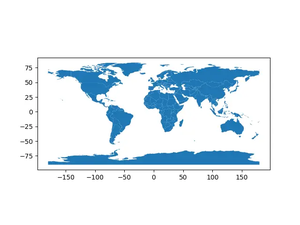Introduction
Kurtosis is a statistical measure that describes the shape of a distribution’s tails in relation to its overall shape. Understanding the kurtosis of a dataset can provide insights into the probability and magnitude of extreme values. In this tutorial, we will explore how to compute the unbiased kurtosis of a data distribution using the Series.kurt() method in Pandas, a powerful data manipulation library in Python.
Understanding Kurtosis
Kurtosis is often referred to as the “tailedness” of a probability distribution. A higher kurtosis value indicates more outliers, while a lower value suggests fewer outliers. There are three types of kurtosis: mesokurtic (kurtosis=0), leptokurtic (kurtosis>0), and platykurtic (kurtosis<0). By utilizing Pandas, we can efficiently compute this statistic for various datasets.
Prerequisites
Before diving into the examples, ensure you have Python and Pandas installed in your environment:
pip install pandasBasic Usage of Series.kurt()
To begin, let’s calculate the kurtosis of a simple Pandas Series. Creating a Series from a list of numbers is straightforward:
import pandas as pd
# Creating a Pandas Series
data = pd.Series([2, 4, 6, 8, 10])
# Computing kurtosis
kurtosis_value = data.kurt()
print("Kurtosis:", kurtosis_value)This basic example yields a kurtosis value, helping us to understand the distribution’s tail heaviness. However, the result might not always be intuitive for small or uniform datasets, emphasizing the importance of using this measure in conjunction with other statistical analyses.
Applying the Series.kurt() on Real-world Data
Real-world datasets often comprise more complex distributions. Consider a dataset that lists the weights of a random sample of cats. By computing the kurtosis, we can infer the likelihood of extremely heavy or light cats within the distribution.
# Assuming 'cat_weights.csv' contains the weights of cats
import pandas as pd
data = pd.read_csv("cat_weights.csv")
weights = data['Weight']
kurtosis_value = weights.kurt()
print("Cats' Weight Kurtosis:", kurtosis_value)In this instance, we’re directly computing kurtosis on a dataset column, offering a more nuanced view of our data’s distribution.
Handling NaN Values
On occasion, datasets will include NaN (Not a Number) values, potentially skewing our kurtosis calculation. Thankfully, Pandas’ Series.kurt() method ingeniously handles NaN by excluding them from the calculation. However, it’s always good practice to explicitly handle NaNs:
# Handling NaN values
import pandas as pd
# Creating a Series with NaN
nan_data = pd.Series([2, np.nan, 4, 6, 8, np.nan, 10])
# Computing kurtosis without NaN
kurtosis_value_without_nan = nan_data.dropna().kurt()
print("Kurtosis without NaN:", kurtosis_value_without_nan)By excluding NaN values, we ensure our computation accurately reflects the data’s distribution.
Comparative Analysis
A fascinating application of kurtosis is in comparative studies. Imagine comparing the kurtosis of two different datasets to determine which has more extreme outliers. This can offer valuable insights, especially in fields like finance where outliers can significantly impact decisions.
# Comparing the kurtosis of two datasets
import pandas as pd
data1 = pd.Series([2, 4, 6, 8, 10])
data2 = pd.Series([1, 3, 5, 7, 9, 11, 13, 15])
kurtosis_data1 = data1.kurt()
kurtosis_data2 = data2.kurt()
print("First Dataset Kurtosis:", kurtosis_data1)
print("Second Dataset Kurtosis:", kurtosis_data2)By comparing these values, analysts can accurately predict the nature of distributions and their propensity for outliers.
Conclusion
The Series.kurt() method in Pandas offers a robust means for computing the kurtosis of datasets, enabling researchers and analysts to assess the likelihood of extreme values. Through careful application and understanding of this measure, we can gain deeper insights into our data’s distribution, driving more informed decisions.
